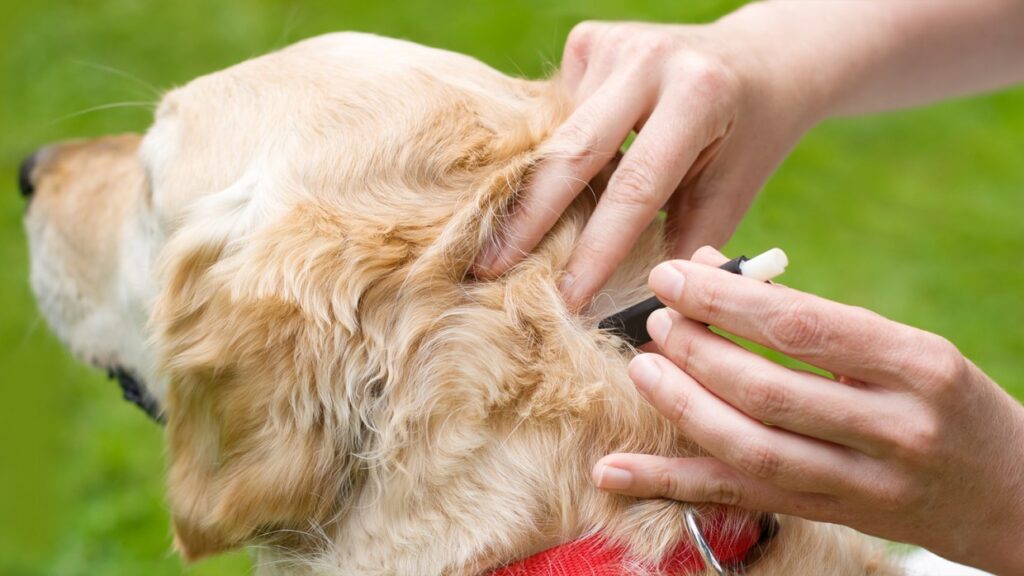Are you tired of constantly researching the very same thing?
Medicine for dog ticks. . . Medicine for dog ticks. . . Medicine for dog ticks. . .
Like a mantra, some of us continuously researched for a better way to stop ticks’ manifestation in our doggie’s everyday life.
Although getting tricks out of our dogs may look simple, the preventive ways to properly keep it away from our canine friend is complicated.
Removal of ticks in dogs is best when using tweezers.
Once ticks in dogs is located, use small tweezers to grab it at the base where it burrowed into the skin and lift it with steady, firm upward pressure. Once the tick mouth is removed from the skin, place this tick in a container or a plastic bag and contact your veterinarian. Use a small amount of alcohol or antiseptic to dab the affected area of your dog’s skin after removal.
Treating your yard and home for ticks and fleas is one of the best ways to prevent infestation or re-infestation. Ways to protect your yard include:
- Keep grass mowed and trim all shrubbery.
- Seal all open spaces where outdoor animals could nest. Avoid leaving food for neighborhood animals such as feral cats or other critters like raccoons and opossums.
- There are effective OTC flea and tick yard sprays, but it is essential to discuss these options with your veterinarian or landscaper first to make sure these products are safe for your pets if ingested.
Flea infestation in the home can become more of a problem than ticks since fleas are often found in high numbers. Ways to protect your home during a flea infestation include:
- Frequent vacuuming to rid familiar places for these parasites to live.
- Vacuuming furniture like fabric chairs and couches, as well as baseboards and under any dog beds in the house.
- Changing vacuum bags or emptying the vacuum container often and in an enclosed environment outside the home.
- Washing your dog’s bedding and toys in hot water a few times weekly to kill any immature fleas.
In cases of severe home infestation or if your dog continues to have recurrent flea/tick infestations, contact an exterminator to discuss pet-friendly options for flea-bombing the home environment.

How To Prevent Fleas and Ticks in Dogs
Prevention of fleas and ticks in dogs is much safer and more straightforward than treatment of possible issues once your dog has been infected. Many options on the market work to prevent flea and ticks in dogs infestation, though none are 100% effective, meaning routine body checks and home cleaning are still necessary. Preventative pills, topicals, and collars should be discussed with your veterinarian to determine the best options based on your pet’s lifestyle.
Flea and tick preventative pills for dogs include:
Isooxazoline ingredients:
- Bravecto, NexGard, Credelio, and Simparica Trio
- The active ingredient in these products kills fleas and ticks by attacking the parasite’s nervous system once they bite your dog. These are safe, effective products, though vets have noted a low risk of seizures, which seems to affect those dogs with a tendency for seizure behavior (such as epileptic dogs).
Spinosad ingredients:
Lufenuron ingredients:
- Sentinel
- This insect growth regulator (IGR) does not kill adult fleas but prevents flea eggs from hatching. It is a good choice for controlling the infestation. Sentinel is ineffective against ticks and has a high safety margin with little concern for toxicity.
All these products are used monthly except for Bravecto, which is dosed every 12 weeks to prevent ticks in dogs.
Topical flea and ticks in dogs preventatives include:
- Frontline
- Revolution
- Advantix
- Advantage Plus
These were once the main line for prevention, but recent studies have found these products to be less effective. Many veterinarians now believe this is due to resistance against the active ingredients since they have been around for so long, inappropriate application (applying immediately before or after a bath can decrease efficacy), or the pet rubbing or licking the product off.
Fleas and ticks in dogs collars effectively control these parasites if used and replaced correctly. Your veterinarian prescribes the most successful products. OTC products aren’t very effective and can allow breakthrough infestations
Even though fleas and ticks in dogs are annoying creatures that like to feed on your doggies or even you, there are many options for protecting your dog and yourself from these parasites. It is essential to discuss all options with your veterinarian to determine the best course of action based on your pet’s medical history, the degree of the infestation, and lifestyle habits.






